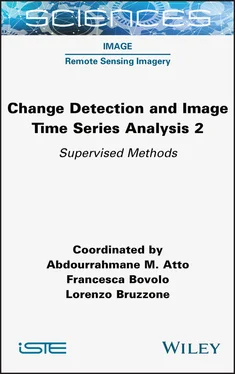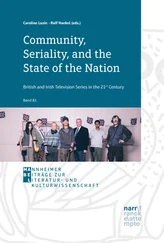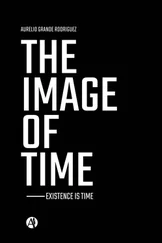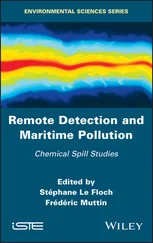Change Detection and Image Time Series Analysis 2
Здесь есть возможность читать онлайн «Change Detection and Image Time Series Analysis 2» — ознакомительный отрывок электронной книги совершенно бесплатно, а после прочтения отрывка купить полную версию. В некоторых случаях можно слушать аудио, скачать через торрент в формате fb2 и присутствует краткое содержание. Жанр: unrecognised, на английском языке. Описание произведения, (предисловие) а так же отзывы посетителей доступны на портале библиотеки ЛибКат.
- Название:Change Detection and Image Time Series Analysis 2
- Автор:
- Жанр:
- Год:неизвестен
- ISBN:нет данных
- Рейтинг книги:4 / 5. Голосов: 1
-
Избранное:Добавить в избранное
- Отзывы:
-
Ваша оценка:
- 80
- 1
- 2
- 3
- 4
- 5
Change Detection and Image Time Series Analysis 2: краткое содержание, описание и аннотация
Предлагаем к чтению аннотацию, описание, краткое содержание или предисловие (зависит от того, что написал сам автор книги «Change Detection and Image Time Series Analysis 2»). Если вы не нашли необходимую информацию о книге — напишите в комментариях, мы постараемся отыскать её.
Change Detection and Image Time Series Analysis 2 — читать онлайн ознакомительный отрывок
Ниже представлен текст книги, разбитый по страницам. Система сохранения места последней прочитанной страницы, позволяет с удобством читать онлайн бесплатно книгу «Change Detection and Image Time Series Analysis 2», без необходимости каждый раз заново искать на чём Вы остановились. Поставьте закладку, и сможете в любой момент перейти на страницу, на которой закончили чтение.
Интервал:
Закладка:
Volume 2: Supervised methods
The second volume of this book is dedicated to supervised methods. Chapter 1of this volume addresses the fusion of multisensor, multiresolution and multitemporal data. This chapter reviews recent advances in the literature and proposes two supervised Markov random field-based solutions: one relies on a quadtree and the second one is specifically designed to deal with multimission, multifrequency and multiresolution time series. Chapter 2provides an overview of pixel-based methods for time series classification from the earliest shallow-learning methods to the most recent deep learning-based approaches. This chapter also includes best practices for reference data preparation and management, which are crucial tasks in supervised methods. Chapter 3focuses on very high spatial resolution data time series and the use of semantic information for modeling spatio-temporal evolution patterns. Chapter 4focuses on the challenges of dense time series analysis, including pre-processing aspects and a taxonomy of existing methodologies. Finally, since the evaluation of a learning system can be subject to multiple considerations, Chapters 5and 6propose extensive evaluations of the methodologies used to produce earthquake-induced change maps, with an emphasis on their strengths and shortcomings ( Chapter 5) and the deep learning systems in the context of multiclass multilabel change-of-state classification on glacier observations ( Chapter 6).
This book covers both methodological and application topics. From the methodological viewpoint, contributions are provided with respect to feature extraction and a large number of evaluation metrics for change detection, classification and forecasting issues. Analysis has been performed in both bitemporal images and time series, illustrating both unsupervised and supervised methods and considering both binary- and multiclass outputs. Several applications are mentioned in the chapters, including agriculture, urban areas and cryosphere analysis, among others. This book provides a deep insight into the evolution of change detection and time series analysis in the state-of-the-art, as well as an overview of the most recent developments.
July 2021
List of Notations
 |
Image Time Series: time index k and pixel position ( p, q) |
 |
Vector Image Time Series: band/spectral index c |
 |
Matrix Image Time Series: (polarimetric indices ( u, v )) |
 |
Sets of Natural Numbers, Integers, Real and Complex Numbers |
| μ, μ | Means of Random Variables and Random Vectors |
| C, Σ | Physical and Statistical Variance–Covariance Matrices |
| Probability Density Function |
1
Hierarchical Markov Random Fields for High Resolution Land Cover Classification of Multisensor and Multiresolution Image Time Series
Ihsen HEDHLI1, Gabriele MOSER2, Sebastiano B. SERPICO2 and Josiane ZERUBIA3
1Institute Intelligence and Data, Université Laval, Quebec City, Canada
2University of Genoa, Italy
3INRIA, Université Cote d’Azur, Nice, France
1.1. Introduction
1.1.1. The role of multisensor data in time series classification
Accurate and time-efficient classification methods for multitemporal imagery and satellite image time series are important tools required to support the rapid and reliable extraction of information on a monitored region, especially when an extensive area is considered. Given the substantial amount and variety of data currently available from last-generation, very-high spatial resolution satellite missions, the main difficulty is developing a classifier that uses the benefits of input time series that are possibly composed of multimission, multisensor, multiresolution and multifrequency imagery (Gómez-Chova et al. 2015). From an application-oriented viewpoint, the goal is to take advantage of this variety of input sources, in order to maximize the accuracy and effectiveness of the resulting thematic mapping products. From a methodological viewpoint, this goal aims for the development of novel data fusion techniques. These techniques should be flexible enough to support the joint classification of a time series of images collected in the same area, by different sensors, at different times, and associated with multiple spatial resolutions and wavelength ranges.
In this chapter, this joint fusion problem is addressed. First, an overview of the major concepts and of the recent literature in the area of remote sensing data fusion is presented (see section 1.1.3). Then, two advanced methods for the joint supervised classification of multimission image time series, including multisensor optical and Synthetic Aperture Radar (SAR) components acquired at multiple spatial resolutions, are described (see section 1.2). The two techniques address different problems of supervised classification of satellite image time series and share a common methodological formulation based on hierarchical Markov random field (MRF) models. Examples of the experimental results obtained by the proposed approaches in the application to very-high-resolution time series are also presented and discussed (see section 1.3).
On the one hand, the use of multiresolution and multiband imagery has been previously shown to optimize the classification results in terms of accuracy and computation time. On the other hand, the integration of the temporal dimension into a classification scheme can both enhance the results in terms of reliability and capture the evolution in time of the monitored area. However, the joint problem of the fusion of several distinct data modalities (e.g. multitemporal, multiresolution and multisensor) has been much more scarcely addressed in the remote sensing literature so far.
1.1.2. Multisensor and multiresolution classification
The availability of different kinds of sensors is very advantageous for land cover mapping applications. It allows us to capture a wide variety of properties of the objects contained in a scene, as measured by each sensor at each acquisition time. These properties can be exploited to extract richer information about the imaged area. In particular, the opportunity of joint availability of SAR and optical images within a time series can possibly offer high-resolution, all-weather, day/night, short revisit time data with polarimetric, multifrequency and multispectral acquisition capabilities. This potential is especially emphasized by current satellite missions for Earth Observation (EO), for example, Sentinel-1 and -2, Pléiades, TerraSAR-X, COSMO-SkyMed and COSMO-SkyMed Second Generation, RADARSAT-2 and RADARSAT Constellation, GeoEye-1, WorldView-1, -2, -3, and WorldView Legion, or PRISMA, which convey a huge potential for multisensor optical and SAR observations. They allow a spatially distributed and temporally repetitive view of the monitored area at multiple spatial scales. However, the use of multisource image analysis for land cover classification purposes has been mostly addressed so far by focusing on single-resolution multisensor optical–SAR imagery, whereas the joint use of multisensor and multiresolution capabilities within a time series of images of the same scene has been more scarcely investigated. This approach bears the obvious advantage of simplicity but is, in general, suboptimal. From a methodological viewpoint, when multisensor (optical and SAR) or multiresolution images of a given scene are available, using them separately discards part of the correlations among these multiple data sources and, most importantly, their complementarity.
Читать дальшеИнтервал:
Закладка:
Похожие книги на «Change Detection and Image Time Series Analysis 2»
Представляем Вашему вниманию похожие книги на «Change Detection and Image Time Series Analysis 2» списком для выбора. Мы отобрали схожую по названию и смыслу литературу в надежде предоставить читателям больше вариантов отыскать новые, интересные, ещё непрочитанные произведения.
Обсуждение, отзывы о книге «Change Detection and Image Time Series Analysis 2» и просто собственные мнения читателей. Оставьте ваши комментарии, напишите, что Вы думаете о произведении, его смысле или главных героях. Укажите что конкретно понравилось, а что нет, и почему Вы так считаете.












